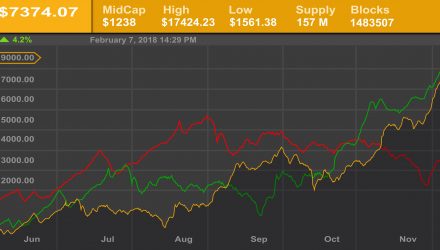After a strong 2019, January 2020 looked like it was going to build off the momentum until the coronavirus outbreak ended the party early. The second half of the month was highlighted by a safe haven scramble towards assets like bonds and precious metals, which essentially derailed ETF inflows.
According to a Monthly Flash Flows report courtesy of State Street Global Advisors, there was over $8 billion of inflows into sector ETFs. However, enter the coronavirus and that quickly resulted in $3 billion of outflows since the intra month peak.
“The outbreak of the Coronavirus has paused the markets’ momentum from the start of the year, leading to another microburst of volatility,” wrote Matthew Bartolini, Head of SPDR Americas Research, State Street Global Advisors. “Growth expectations are now being reset, and risk assets (i.e., stocks) are being repriced. That’s it. The rally has been paused, not stopped. The recent downturn is all about the likely impact that the Coronavirus may have on economic growth, at a time when growth is already perilously slow. It’s a scare that affects the consumer – the largest part of our global economy and the one pillar bearing the majority of the load after trade tensions created fissures in manufacturing.”
Analysts were already predicting more moderate growth in 2020 after such a white-hot 2019, but not this abruptly. While the major indexes like the S&P 500 may very well be on their trajectory to more record highs, the central bank’s actions will play a major role in how the markets react moving forward.
Their latest move, a rate pause after three successive hikes in 2019, doesn’t necessarily indicate that economic fundamentals are weak. The labor market is still hot as evidenced by historically low unemployment levels.
“Central banks are likely to remain overly accommodative, evidenced by the People’s Bank of China providing short-term funding to banks and cutting the interest rate it charges for that money in an effort to stabilize their local markets,” wrote Bartolini. “Prior to the selloff, the market was able to wave off other macro events (mixed earnings results, US-Iran tensions, the actual Brexit, President Trump’s impeachment proceedings) as more noise than news, like we waved off a friendly neighbor all those years ago.”
So given the latest occurrences, what’s the best way to approach the current market environment?
“In a market like this, where earnings are mixed, valuations are not cheap, and policymakers offer support to keep the game going but are not able to solve the larger growth problem by fostering organic growth, focus on strategies that offer upside potential but limit downside risk,” Bartolini said.
For more market trends, visit ETF Trends.

